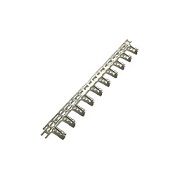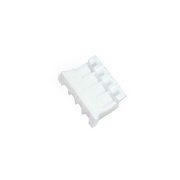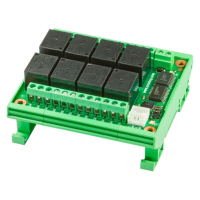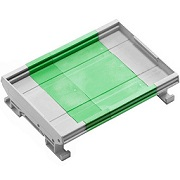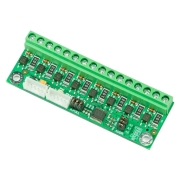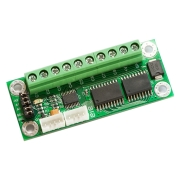*The RoHS icon on this product indicates that the PCBs, components, solder, and chemicals are all lead-free and RoHS compliant. Additionally, this product is produced using a lead-free process. Unfortunately, we are currently unable to provide documentation confirming that this product is RoHS compliant.
Resources:
*If your browser cannot display the PDF file properly, please save it to your computer and open it with a PDF reader.
Package Includes:
Notes:
- This board uses 4-pin connectors for I2C bus.
Features:
- 4 channels of analog inputs
- MCP3424 ADC with selectable resolution: 12,14,16 and 18-bit
- Input voltage range: 0-5V, 0-10V
- Input current range: 0-20mA, 4-20mA, 0-40mA
- I2C bus interface: 100Khz, 400Khz, 3.4Mhz
- Programmable Gain Amplifier(PGA)
- On-board pull-up resistors for I2C bus
- Up to 8 boards on a single bus
- Compatible with most microcontrollers
- Single supply operating voltage: 2.7V to 5.5V
- Inverse polarity protection circuit for supply voltage
- 30V over-voltage protections for each input channel
- Input transient suppression for each input channel
- PCB size: 67.5 x 36.0 mm
This is an analog-to-digital converter board with an I2C bus interface, known as the I2C ADC Board. The board features 4 analog inputs, each capable of connecting to either a voltage or current source. You can connect 0-5V or 0-10V to each input for voltage measurement, or 0-20mA, 4-20mA, or 0-40mA for current measurement.
Each input is equipped with over-voltage protection circuitry, capable of protecting the board from continuous voltages up to 30V. This helps safeguard the board from damage caused by human error or incorrect connections. Additionally, each input is protected by a transient suppression device, which shields the board from external voltage spikes when connected to long sensor wires.
An on-board ADC converts the analog input signals to digital values. The resolution of the ADC can be selected between 12, 14, 16, and 18 bits. The most significant bit (MSB) of the digital output represents the sign bit, which defaults to zero, indicating a positive value. The digital output can be read by a microcontroller through the I2C bus.
The Programmable Gain Amplifier (PGA) of the ADC can also be controlled via the I2C bus. The bus speed is compatible with standard modes of 100kHz, 400kHz, and 3.4MHz. Each board’s I2C address is selected using two jumpers, with a total of eight available addresses, allowing up to eight boards to be connected on a single bus.
The board includes two 10kΩ pull-up resistors for the I2C bus lines, which can be enabled or disabled using jumpers. These resistors are suitable for use with a 100kHz bus speed. The board requires a single supply voltage between 2.7V and 5.5V for operation.
To prevent damage to the board, do not plug or unplug I2C cables while the power supply is on. Always turn off the power supply before plugging or unplugging I2C cables on the board.







